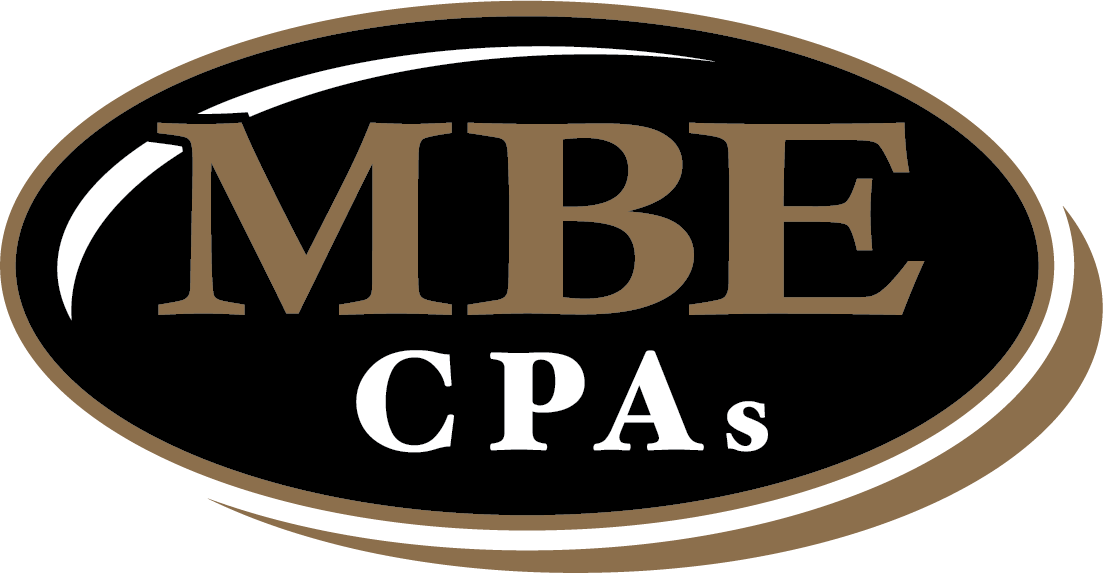The C-Corp Sale: Double Taxation and QSBS

Authored by: Ryan Weber — Partner, CPA, CVA | Date Published: November 12, 2025
You’ve done it. After years of hard work, resilience, and risk-taking, your C-corporation has attracted a serious buyer with a compelling offer. The number is bigger than you ever imagined. You can finally see the finish line, until your tax advisor walks you through the numbers and the room starts to spin. The corporation pays taxes on the gain, the shareholders pay taxes again on the proceeds, and suddenly that life-changing sale feels like a financial trap. This is the double taxation problem that plagues C-corporation owners.
This blog discusses the critical tax considerations every closely held C-corp seller must understand before signing on the dotted line. The heart of the issue is a fundamental conflict. Buyers want to purchase assets so they can step up their basis and benefit from accelerated depreciation, but this leaves sellers facing a hefty tax bill when the corporation recognizes the gain. The problem compounds when the proceeds are distributed to shareholders, triggering a second round of taxes that can slash net proceeds by 40% or more. Fortunately, there are solutions. We’ll explore how this buyer-seller tension plays out in real-world transactions and, more importantly, how Qualified Small Business Stock (QSBS) can serve as a powerful tax-mitigation strategy for eligible sellers.
Featured Topics:
- Why does selling a C-corporation’s assets result in double taxation?
- What are the tax advantages and disadvantages of stock sales vs. asset sales for a C-corp buyer and seller?
- How can founders and early investors use QSBS to avoid capital gains tax on a C-corp exit?
- Next Steps for C-Corp Owners
- Conclusion
Why does selling a C-corporation's assets result in double taxation?
When a closely held C-corporation is sold, the most significant force on the final take-home value is the risk of double taxation. Double taxation occurs because the C-corporation is treated as a separate, taxable entity from its owners (the shareholders). In a typical asset sale, the type most buyers prefer, it happens in two distinct stages:
Level 1: The Corporate Tax
The C-corporation itself sells its assets (equipment, goodwill, inventory, etc.) to the buyer. The gain realized from this sale is subject to the corporate income tax rate (currently 21% federally), plus any applicable state taxes.
Level 2: The Shareholder Tax
After the corporation pays its tax bill, the remaining cash proceeds are distributed to the shareholders. This distribution is then taxed again at the individual shareholder level, typically as a capital gain.
The outcome is a significantly reduced net after-tax cash flow for the shareholders. For business owners and their advisors, the difference between an effective 15−25% tax rate (typical of a single-layer stock sale) and a 35−45% effective rate (typical of a double-taxed asset sale) is millions of dollars in lost wealth.
What are the tax advantages and disadvantages of stock sales vs. asset sales for a C-corp buyer and seller?
In many C-corp sales, conflict arises between buyers who want to optimize their own tax outcomes and sellers who are focused on minimizing double taxation. This affects how deals are structured and often leads to intense negotiations over the final purchase price.
Buyer's Preference: The Asset Sale
- The Benefit: When a buyer acquires assets, the purchase price becomes the new tax basis for those assets. If the purchase price is higher than the seller’s existing basis, the buyer gets a “step-up” (a higher starting value for tax purposes). This allows the buyer to claim greater future depreciation and amortization deductions on the acquired assets. These deductions reduce the buyer’s taxable income for years to come.
- The Cost: The asset sale structure is the root cause of the seller’s double taxation. The seller (the C-corporation) must pay tax on the gain from the sale of its individual assets, triggering the first corporate layer of tax.
On the other hand, sellers, aiming to maximize their net cash flow, almost always prefer to sell the company’s stock.
Seller's Preference: The Stock Sale
- The Benefit: In a stock sale, the shareholders sell their ownership shares directly to the buyer. The transaction is only taxed once as a capital gain on the difference between the sale price and the stock’s basis. This structure avoids the costly corporate-level tax altogether, preserving maximum value for the owners.
- The Cost: Buyers strongly resist stock sales because they inherit the corporation’s existing, usually low, tax basis in its assets. Consequently, the buyer does not receive the tax basis step-up and loses out on the future depreciation and amortization tax shields.
Deal Structure and Negotiation
Buyers see the lost tax benefits (the step-up) from a stock sale as a real economic loss. When sellers push for a stock sale to avoid double taxation, buyers often respond by lowering their purchase offer to compensate for the lost tax value.
On the other hand, if buyers insist on an asset sale to secure the step-up, sellers may counter by demanding a higher price to offset the additional corporate-level tax burden. Advisors play a crucial role in quantifying these tax implications and reaching a compromise, usually landing on a deal structure that maximizes after-tax proceeds for sellers while still appealing to buyers.

How can founders and early investors use QSBS to avoid capital gains tax on a C-corp exit?
While double taxation can feel inevitable, the Qualified Small Business Stock (QSBS) exclusion offers a lifeline to early investors and founders. This can potentially eliminate federal tax on a substantial portion of a C-corporation sale.
QSBS refers to stock that meets a strict set of criteria under Internal Revenue Code Section 1202. Its purpose is to incentivize investment in new, small businesses by offering a large tax break to those who take on the risk.
The main advantage of holding QSBS is that eligible shareholders can exclude up to $10 million (or 10 times their adjusted basis in the stock, if greater) in gain from their federal taxable income. For example, if a founder realizes a $10 million gain on qualified QSBS, their entire federal capital gains tax on that amount could be eliminated. It’s important to note that some states do not observe the federal exclusion.
The Four Key Requirements for QSBS
Qualifying for the QSBS exclusion isn’t automatic. Both the stock and the corporation must meet several requirements from issuance through sale.
- Holding Period: The stock must have been held by the shareholder for more than five years. This is the most common reason for disqualification when a sale occurs sooner than planned.
- Original Issuance: The stock must have been acquired by the seller directly at original issuance from the corporation. This generally means the exclusion is only available to founders and early investors, not those who buy stock in the secondary market.
- Entity Status: The company must have been organized as a C-corporation at the time the stock was issued, and substantially all of its assets must have been used in an active trade or business during the five-year holding period.
- Gross Assets Test: The C-corporation must have had $50 million or less in gross assets immediately after the stock was issued. This ensures the exclusion is reserved for truly “small” businesses at their inception.
For qualifying sellers, the QSBS exclusion serves as the ultimate remedy for double taxation. A stock sale already means sellers face just one layer of capital gains tax. If that tax is effectively erased by the QSBS exclusion (up to the limit), the seller’s federal tax burden on the sale can be minimal or even nonexistent.
For C-corp owners, QSBS eligibility can turn a high-tax asset into a powerful engine for wealth creation. That’s why proactive tax planning for QSBS compliance is one of the most valuable services an advisor can offer.

Next Steps for C-Corp Owners
For C-corp owners contemplating a future liquidity event, your tax outcome is not predetermined. Taking proactive steps now, years ahead of a sale, is the only way to successfully navigate the double taxation trap and maximize the benefits of QSBS.
- The Five-Year Clock: You must hold QSBS for more than five years. Selling even a month too early means losing the exclusion. Founders and early investors should closely track this timeline.
- The $50 Million Asset Test: To qualify, the company’s gross assets must be $50 million or less immediately after issuing the stock. If early capital raised pushes assets over this limit, the shares may not qualify. Reviewing this metric early gives you time to consider restructuring if needed.
The conflict between the buyer’s and seller’s preferences requires creative solutions from experienced advisors. Work with professionals to explore complex deal structures designed to mitigate double taxation, such as:
- Reverse Mergers/F Reorganizations: These complex structures can sometimes let a C-corporation convert to a more tax-efficient S-corporation or LLC before a sale, potentially preserving QSBS benefits.
- Tax Indemnities: Negotiating clauses in which the buyer pays extra to cover the seller’s corporate-level tax in an asset sale, helping the seller avoid double taxation.
- Deemed Asset Sales (338(h)(10) Elections): These don’t apply to C-corporations, but understanding similar structures and why they’re excluded can help frame negotiations and the tax cost of a C-corporation status.
Documenting and Preserving the QSBS Claim
Proving that your stock qualifies for the QSBS exclusion is the responsibility of the shareholder. When it’s time to sell, the IRS will require clear proof that all QSBS criteria were met throughout the five-plus-year period. Ensure you have the following documentation ready:
- Issuance Documents: Records confirming the stock was acquired at original issuance.
- Asset Statements: Historical financial statements confirming that the gross assets were under $50 million immediately after the stock was issued.
- Active Business Records: Evidence that the corporation was conducting an active trade or business for the duration of the holding period.
Insufficient documentation can cost you millions in QSBS benefits, turning a potential tax-free gain into a fully taxable one.
Conclusion
You didn’t build your business to give 40% away in taxes. You built it for security, freedom, and a lasting legacy. Double taxation is a real threat, but it isn’t inevitable. Whether you’re five years from a sale or actively negotiating today, proactive tax planning is the best defense against losing wealth. You’ve built an exceptional business; make sure you protect its value.
Reach out to MBE CPAs for a consultation. Our experienced team will review your corporate structure, assess your QSBS eligibility, and develop a forward-thinking tax strategy to minimize double taxation and maximize your profit.
